After learning about all types of hemming stitches and learning a few of them. I learned that some stitchers are confused about hem stitch vs running stitch. Cause some of the hem stitches are invisible.
So they think the same. But it isn’t the same. They differ on many levels.
The hem sewing is used to secure fabric edges with a nearly invisible finish, while the running stitch is a basic, straight stitch used for basting, gathering, or decorative purposes.
Still on convinced? Ok, let’s see how they differ.
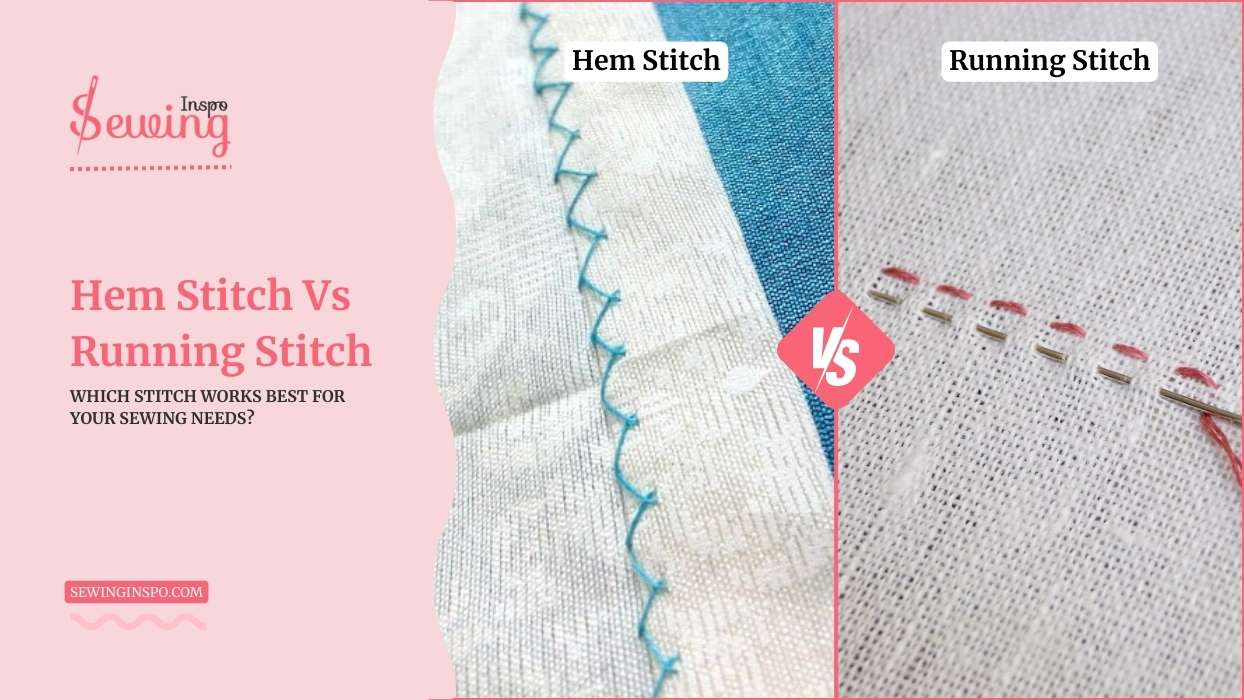
Table of Contents
Hemming Stitch What?
A hand hemming stitch is a sewing involves small, diagonal stitches that catch just a few threads of the fabric on the front side.
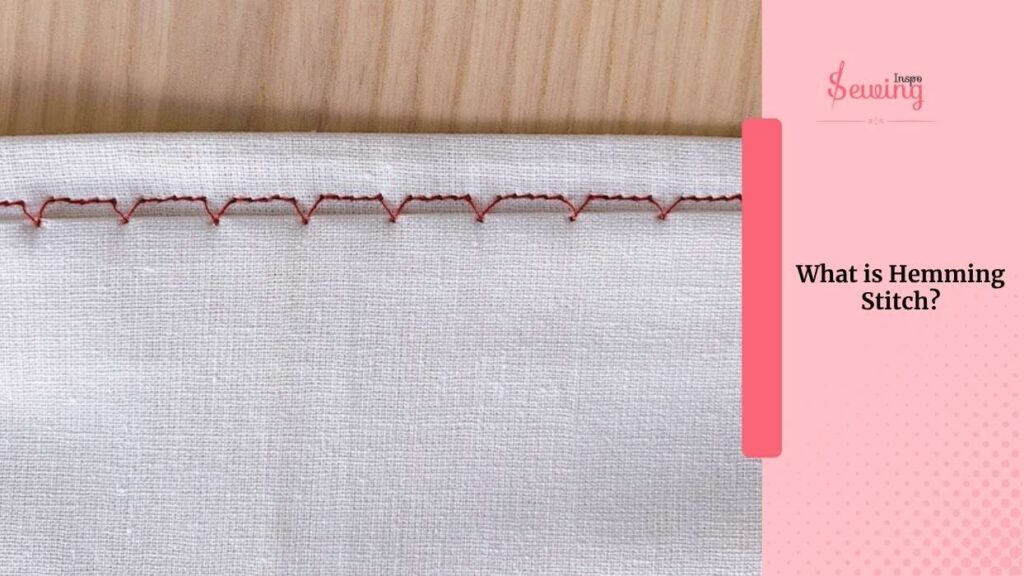
It makes the stitch barely noticeable from the outside.
What Is Hemming Stitch Used For?
A hemming stitch uses to secure the raw edge of fabric, typically at the bottom of garments like skirts, pants, or sleeves.
It helps prevent fraying and gives the piece a clean, finished look. The hemming stitches are important for creating neat edges and professional-quality seams.
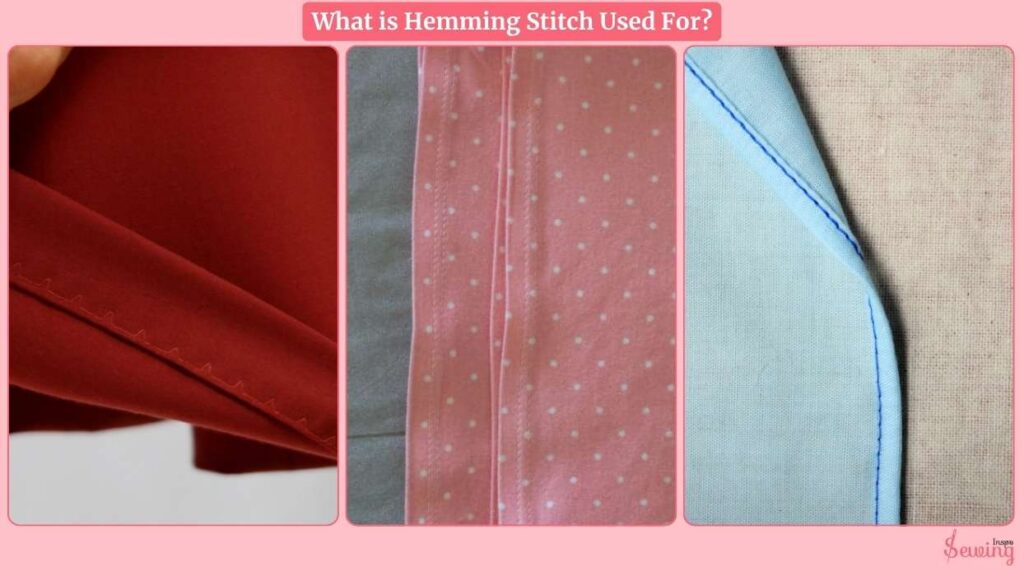
Hem Stitch Vs Running Stitch By Hand Difference
The main difference between a hem stitch vs running stitch is Hem stitch is a nearly invisible, secure edge-finishing stitch, while a running stitch is a simple, visible stitch.

But rather than that, there is more to it like there are differences between straight hem vs blind hem.
| Feature | Hem Stitch | Running Stitch |
| What It Does | Secures fabric edges with nearly invisible stitches for a clean hem. | A quick, straightforward stitch used for joining fabric or temporary sewing. Some also call it a running stitch hem. |
| Looks Like | Simple hem stitch has a Tiny, slanted stitches on the back, almost invisible on the front. | Visible, evenly spaced dashes on both sides. |
| Strength Factor | Strong and holds fabric edges well. | Less secure, great for temporary or decorative use. |
| Skill Level | Needs a steady hand for neat results. | Super beginner-friendly! |
| Best For | Hemming clothes, finishing fabric edges stylishly. | Basting, gathering, quilting, or just stitching things together fast. |
| Thread Use | Minimal thread, spaced-out stitches. | More thread usage, but easy to control. |
Plain Hem Vs Stitch Hem
Some also think plain hem and hem stitch, thinking they’re talking about the same thing. But it’s not the case,
A plain hem is a simple fold of fabric turned up and sewn down. It is often used with an invisible or straight stitch. A stitched hem, on the other hand, refers to any hem where the stitch is visible or decorative, like a topstitched hem or blind hem with visible bites.
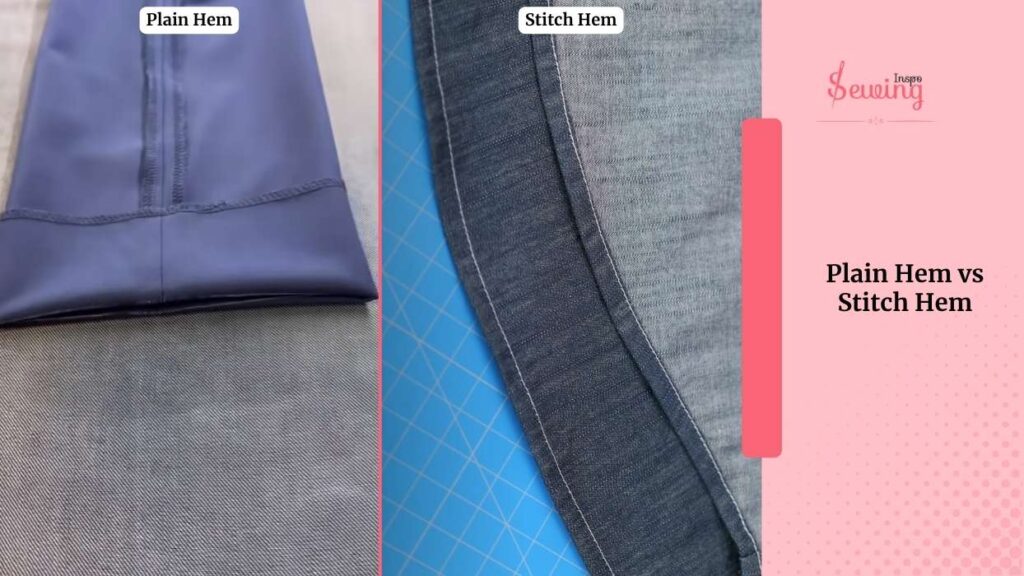
While plain hems focus on subtlety, stitched hems can add structure or visual detail, depending on the project.
Can You Hem With A Running Stitch?
Yes, You can hem with a running stitch, but it’s not the strongest option. It’s easy to do since it’s just a simple in-and-out stitch among hand stitch patterns.
But not as secure or invisible as other hemming stitches. Over time, it might come loose or let the fabric fray. It is especially true if you’re washing or wearing it often.

A slip hem stitch would be a much better bet if you want a sturdier, cleaner finish. If you want something unique then use a vertical hemming stitch.
When Would You Use A Running Stitch?
You need to use running stitch when you need something quick. It’s perfect when you need a temporary stitch lightweight fabrics, or decorative hand-stitching. Sometimes it’s also called a running stitch hem.
But if you need a strong, long-lasting seam, go for something more secure, like a backstitch.

And,
A hemming stitch is perfect for a clean among sewing stitches types. It is a nearly invisible finish on your fabric edges. It’s ideal for hemming clothes and curtains.
Running Stitch Hem Pattern
If you wanna mix things up together for a fun twist, then you can use the pattern below.
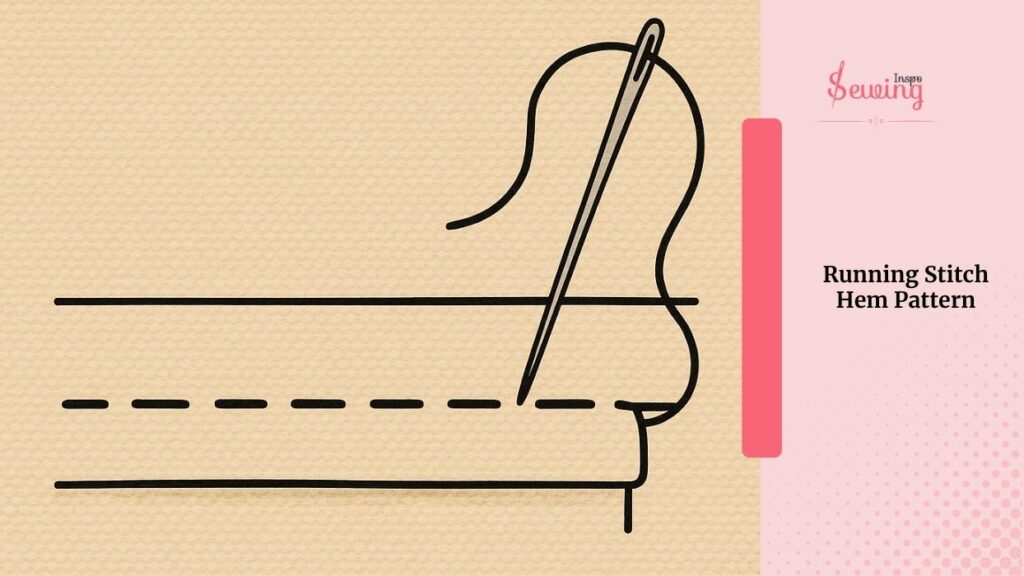
Frequently Asked Questions
What Stitch Should I Use For A Hem?
It depends on the fabric and the look you want! A hemming stitch (like a slip stitch or blind hem stitch) is great for an invisible finish. If you want a quick and sturdy option, a running stitch or straight stitch works well, especially for casual hems.
What Is The Strongest Hand Stitch For Hemming?
A backstitch is one of the strongest hand stitches and can be used for a secure hem, especially on heavy fabrics. If you want an invisible but strong hem, try a blind hem stitch.
What is the easiest hemming stitch for beginners?
A slip stitch is a great option because it’s easy to sew and creates a nearly invisible hem. If you don’t mind visible stitches, a running stitch is the simplest to learn.
Conclusion
So yeah, that’s about the difference between hem stitch vs running stitch. If you’re like me, you probably want a stitch that’s both easy and looks good. A hemming stitch like the slip stitch is perfect for an invisible finish.
So don’t stress—just grab your needle, experiment a little, and enjoy the process. You’ve got this.


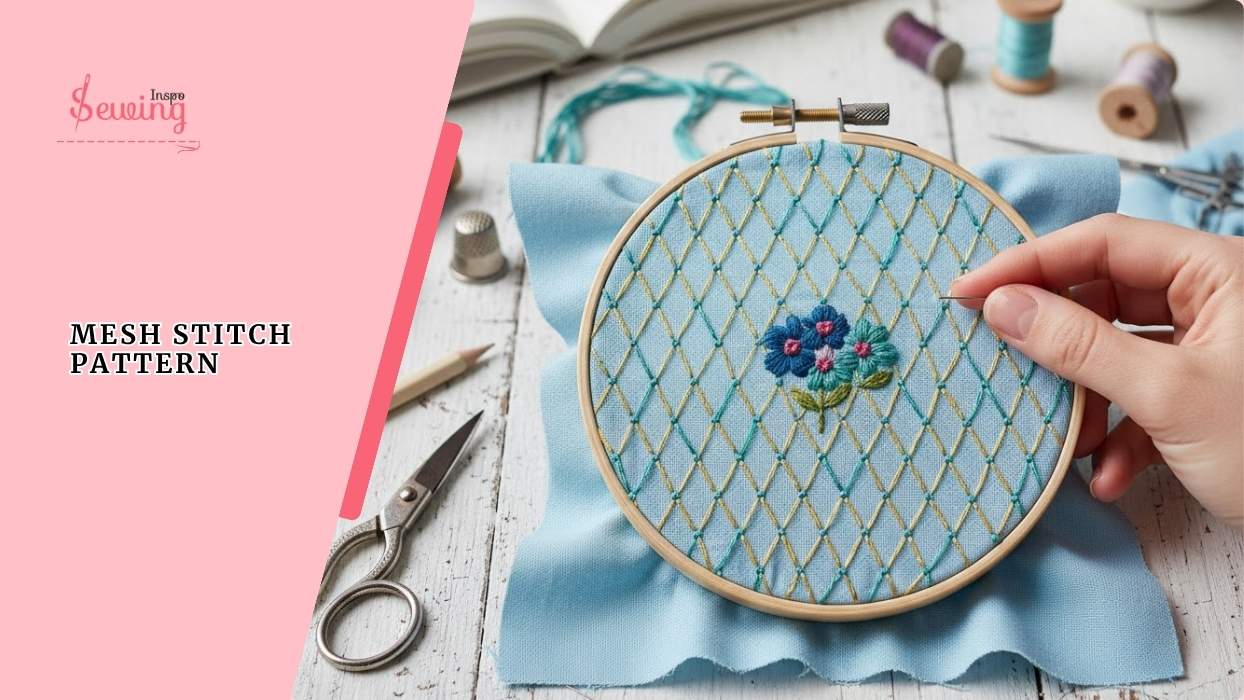
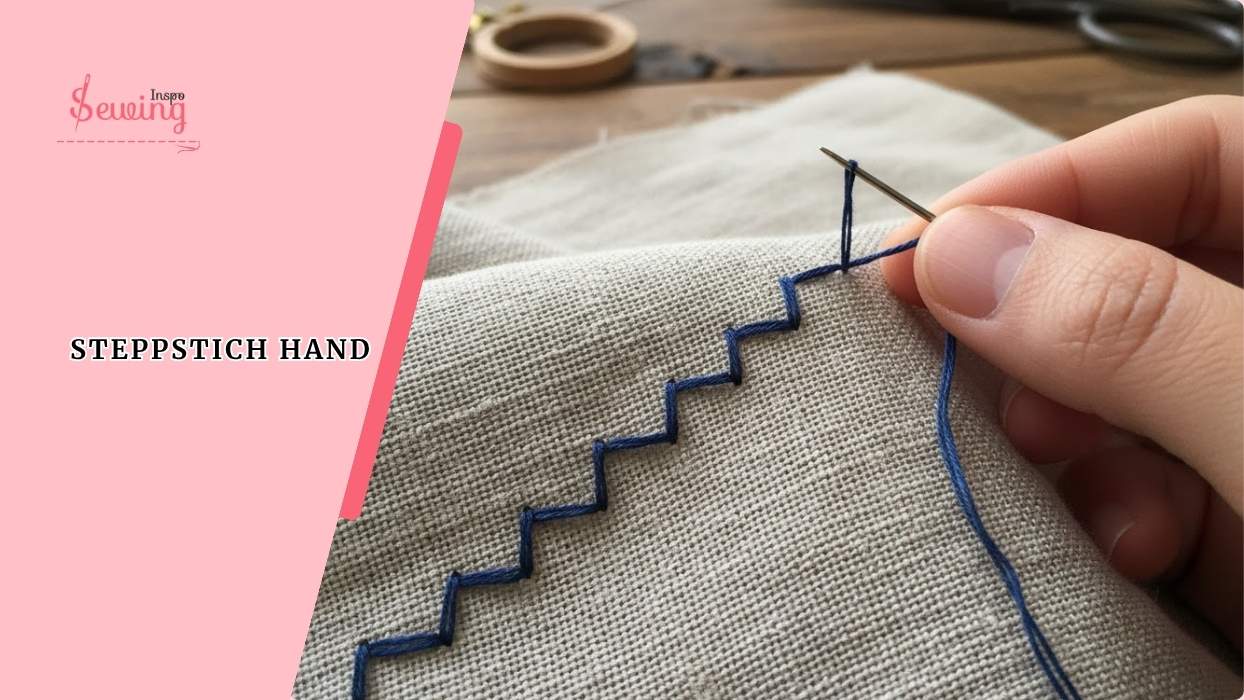
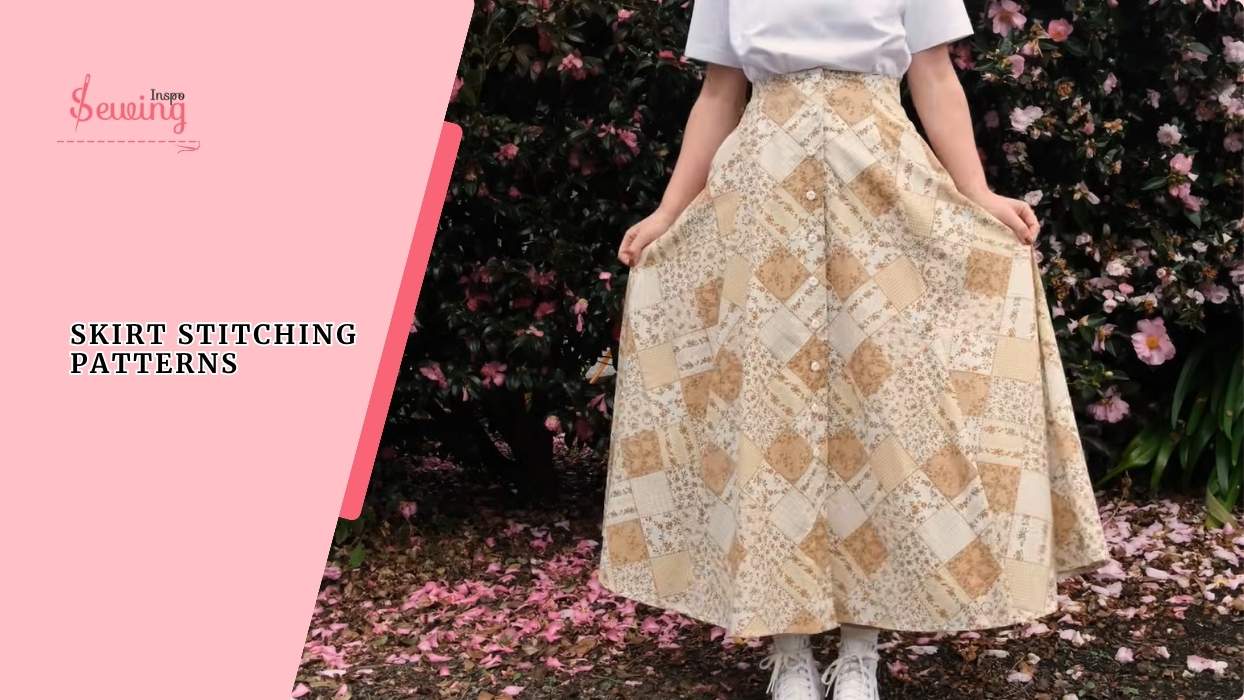
Leave a Reply